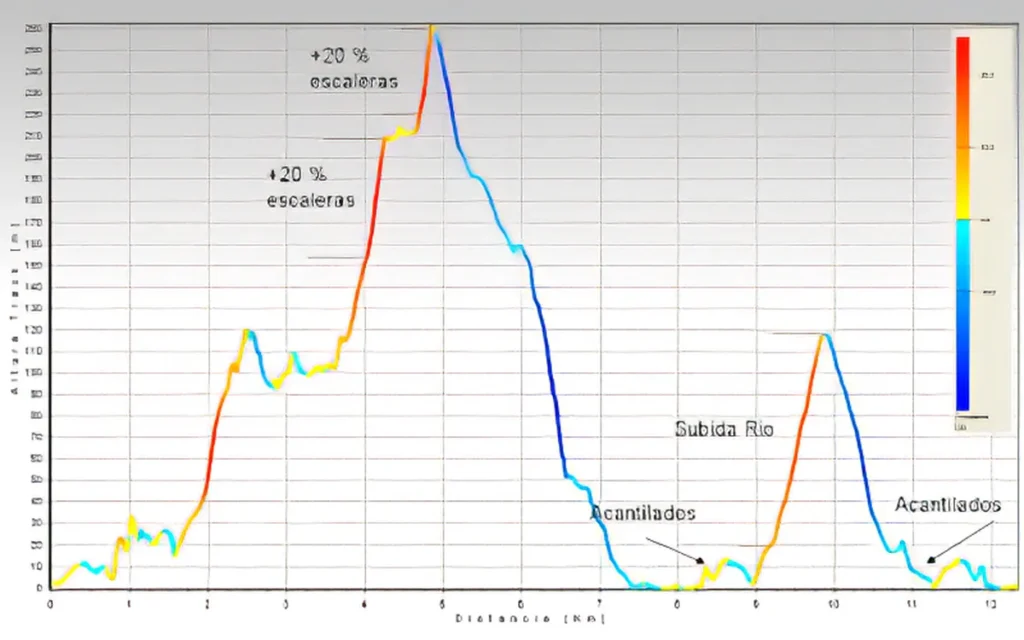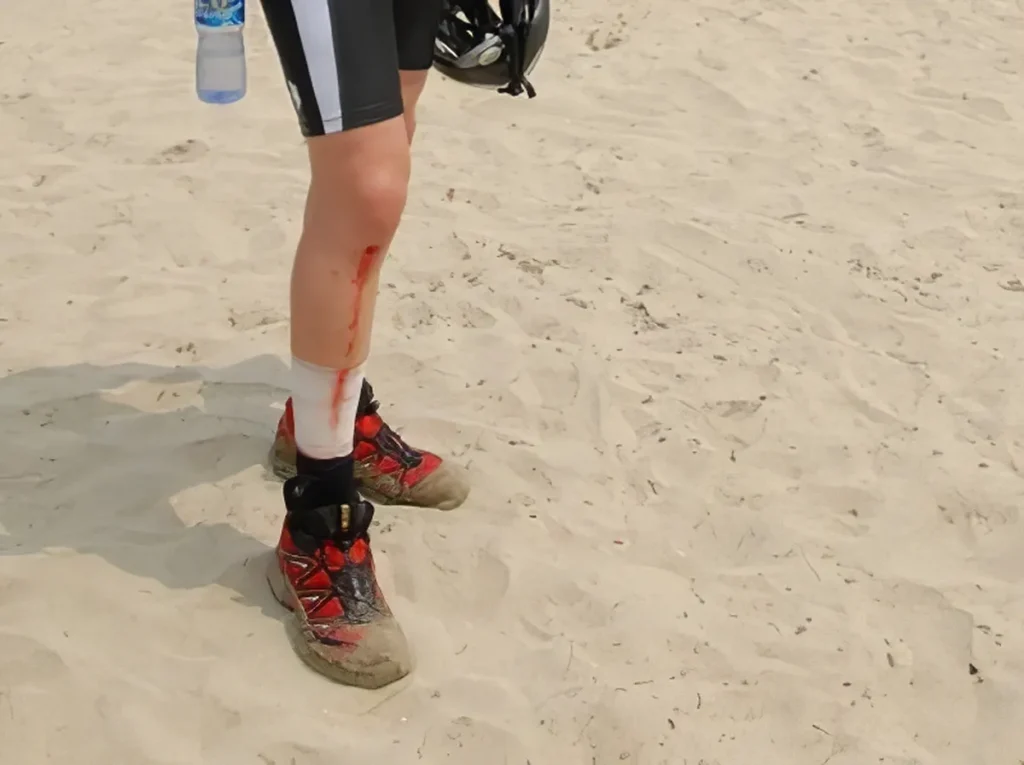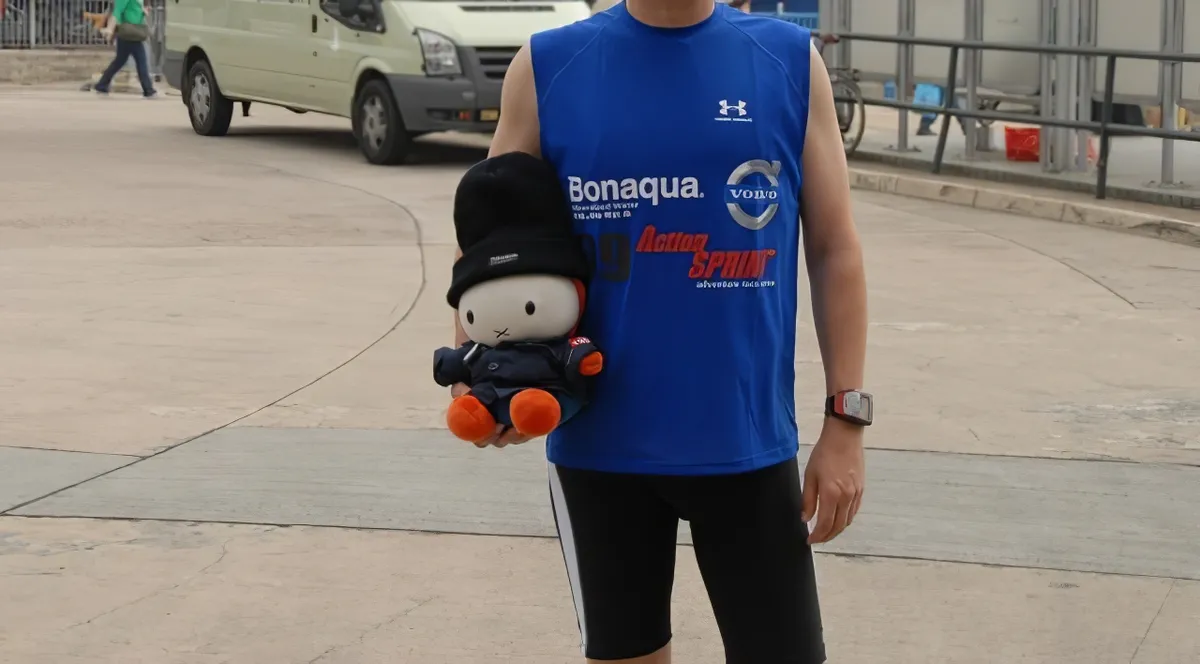
As my running companions busied themselves with preparations for the 2009 Cursa de Bombers, I embarked on my first-ever trail race. Fueled by confidence derived from our intensive hill running sessions at our training spot, I approached the challenge with optimism.
The day prior, I meticulously traced the race route up to the 8th kilometer and studied a Digital Elevation Model to understand the terrain. Reflecting on this experience now, I’m compelled to document it, lest I forget its intricacies. Surprisingly, even after completing a marathon, my countenance seemed less strained than it does today.
Yet, I made several errors. Foremost among them was neglecting to carry water or isotonic drinks for the initial eight kilometers. Running in tropical or perhaps subtropical conditions—26 to 29 degrees Celsius with 98% humidity—was a stark contrast to the familiar terrain of Parc Güel. Another mistake was commencing the race at a very high pace (3:40 minutes per kilometer), placing me amidst a sea of determined runners racing to reach the first kilometer mark as swiftly as possible. And indeed, there was a valid reason for this urgency; a narrow path, barely accommodating a single individual, posed challenges for overtaking.
Navigating the Course: Trials and Triumphs
From approximately 1.6 to 2.5 kilometers, the path ascended steadily, allowing me to maintain a modest yet consistent pace. However, between the 4th and 4.8th kilometers, my legs succumbed to fatigue due to the demanding inclines. Hindered by both physical exhaustion and fellow runners, I struggled to reach the summit, approximately 260 meters above sea level.
The descent proved equally arduous. With legs throbbing and lactic acid accumulating, I embarked on a perilous downhill stretch from the 5th to the 7.5th kilometer. Negotiating loose stones that threatened to twist my ankles, I passed fellow competitors off-track, propelled by sheer determination. By the 6th kilometer, upon reaching a more stable terrain, I managed to maintain a pace of approximately 4:45 minutes per kilometer, enabling me to overtake several participants.
Encountering Obstacles: Overcoming Adversity
As we approached Pui O beach, a water crossing awaited us, followed by a challenging 700-meter run on the sandy shores—my shoes laden with water and sand, an unwelcome hindrance. Despite my aversion to beach running, I persevered, navigating the terrain to reach the first checkpoint within the top 10 or 15 positions, according to a friend’s account.
The eventual winner completed the race in 48 minutes, while I finished in a commendable 52 minutes—a result I deemed satisfactory, with only 4 kilometers remaining. However, unforeseen obstacles lay ahead.

Facing Unanticipated Challenges
Unexpectedly, a 700-meter stretch along cliffs demanded precarious leaps from one slippery rock to another—an aspect I had not accounted for. Determined to preserve my ankles for future endeavors, I cautiously navigated this treacherous section, albeit at the cost of losing ground to competitors.
The race’s climax involved a kilometer-long uphill loop alongside a river, characterized by imposing, slick rocks, climbing segments, and even a rope ladder. Despite initially overtaking some participants, my progress slowed as I navigated each step meticulously, hindered by a bleeding knee sustained from a fall into the sea. Grateful for the gloves I had purchased, I cautiously advanced, albeit with several competitors overtaking me in the final stretch.
A Bittersweet Conclusion
Crossing the finish line, I was overcome with exhaustion and a sense of disappointment. Despite my best efforts, I couldn’t shake the feeling of failure, compounded by the disappointment of my daughter bunny, who had cheered me on from the top positions at the 8th kilometer, only to witness my descent in the rankings.
Exhausted and disheartened, I opted to forego the finish party, retreating into solitude. Reflecting on the day’s events, I realized I had pushed myself beyond my limits, facing challenges I hadn’t anticipated and enduring more than I had prepared for. As I hailed a taxi to visit the Giant Buddha, I couldn’t help but feel a lingering sadness, overshadowing any sense of accomplishment from completing the race.



Oh I hope Father Bunny feels better soon! I hope to see you soon!
Oh I hope Father Bunny feels better soon! I hope to see you soon!